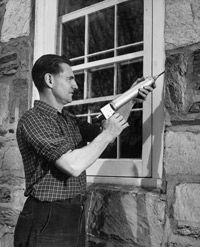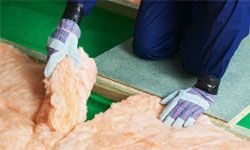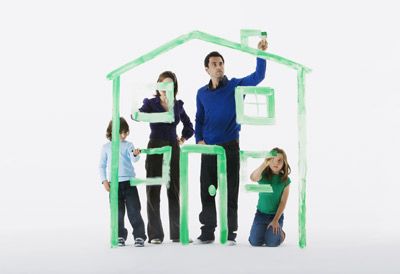When you work on your home to make it more energy efficient and less expensive to maintain, you should consider what safety measures need to be implemented as well.
Homes are made up of many different components that work together as a system. If you change one part of that system, the other parts are affected. Ultimately, you alter the way the home functions.
Advertisement
A previously unweatherized house typically has a leaky shell. Air from outside is free to infiltrate and exfiltrate through various uncaulked and unfilled cracks, gaps, and holes in the exterior. When you stop up those leaks, replace old windows, caulk, and fill, thus removing some of the pathways through which air formerly entered the house. From the standpoint of saving energy this is a good thing. The less air that leaves the house, the less heating and cooling need to be produced in order to replace it. But is there such a thing as a house that is too airtight?
The answer is that it really isn't possible to make a house too airtight. It is possible, however, to make it too poorly ventilated. Where is the dividing line? In this article, we'll discuss the equipment or techniques that can help you protect your home's air flow as you make it more energy efficient. We'll even review alternative energy sources to improve your home.
Potential Hazards of Weatherizing a Home
Systems in the house require a reliable influx of air to operate properly. Specifically, these are the items that burn fuel on site and then exhaust combustion byproducts outside through a vent or fluepipe, such as furnaces, boilers, water heaters, fireplaces, and gas clothes dryers. If a house is made relatively airtight and not enough combustion air is provided for these fuel-burners, problems can result.
Here's an example: A furnace or boiler burns fuel in order to heat a house. The fuel (either gas or oil) requires mixing with air in order to combust properly. When the burner on a conventional furnace or boiler fires up, it draws air into a combustion chamber. The air mixes with the fuel, the mixture is burned up, and the exhaust gases are vented outside. Air rushing into the combustion chamber and then up the fluepipe has to come from somewhere. This air has to be replaced, or made up.
In poorly weatherized houses, this "make-up air" can enter through the variety of gaps in the building's exterior shell. Since it's easy for the air to enter this way, such gaps are referred to as "paths of least resistance." But what happens when you start to close these pathways? Where does make-up air come from then?
If you tighten up your home's exterior and do not make provisions to provide the fuel-burning equipment on site with a source of make-up air, the air may be drawn down different -- and less desirable -- pathways. One of these might be the water heater's fluepipe.
For example, a problem might arise when a water heater and furnace happen to operate at the same time. Both demand make-up air. If not enough air is freely available, the furnace can draw make-up air from the water heater's fluepipe. Should this occur, combustion by-products produced by the water heater are vented back down the fluepipe and into the house. This condition is called "backdrafting," and it has potentially dangerous consequences.
Combustion byproducts, such as those produced by fuel-burning water heaters, boilers, furnaces, fireplaces, and gas clothes dryers, contain carbon monoxide gas, a poison that is taken up by the body's red blood cells in place of oxygen. According to the Consumer Product Safety Commission (CPSC), approximately 125 people in the United States die every year of carbon-monoxide poisoning. Some of those deaths are attributed to backdrafting conditions from fuel-burning devices.
Backdrafting can also occur when exterior-vented fan devices operate. A kitchen range hood is a good example, as well as bathroom ventilation fans. Anything that pushes air out of the house reduces the air pressure inside, and make-up air has to come from somewhere in order to replace the air that is lost. The more airtight the house, the greater the potential for backdrafting.
The solution to backdrafting is to provide enough make-up air for fuel-burning equipment to operate correctly. Building codes require a make-up air inlet to be piped into the mechanical room in all new homes. Older homes, however, often lack such a pipe.
Therefore, you should consult your furnace or boiler service person before you do any tightening of your home's shell. It could be that your house already has a make-up-air pipe in place. If it doesn't, one can be easily added.
One more note about fuel-burning items in the home. If you opt to have a furnace or boiler replaced with a new, energy-efficient model, consider paying more for a high-efficiency sealed combustion unit. These systems draw combustion air directly from outside the house. This eliminates the need for a lot of make-up air, though you still might need some for a gas- or oil-fired water heater.
Advertisement


